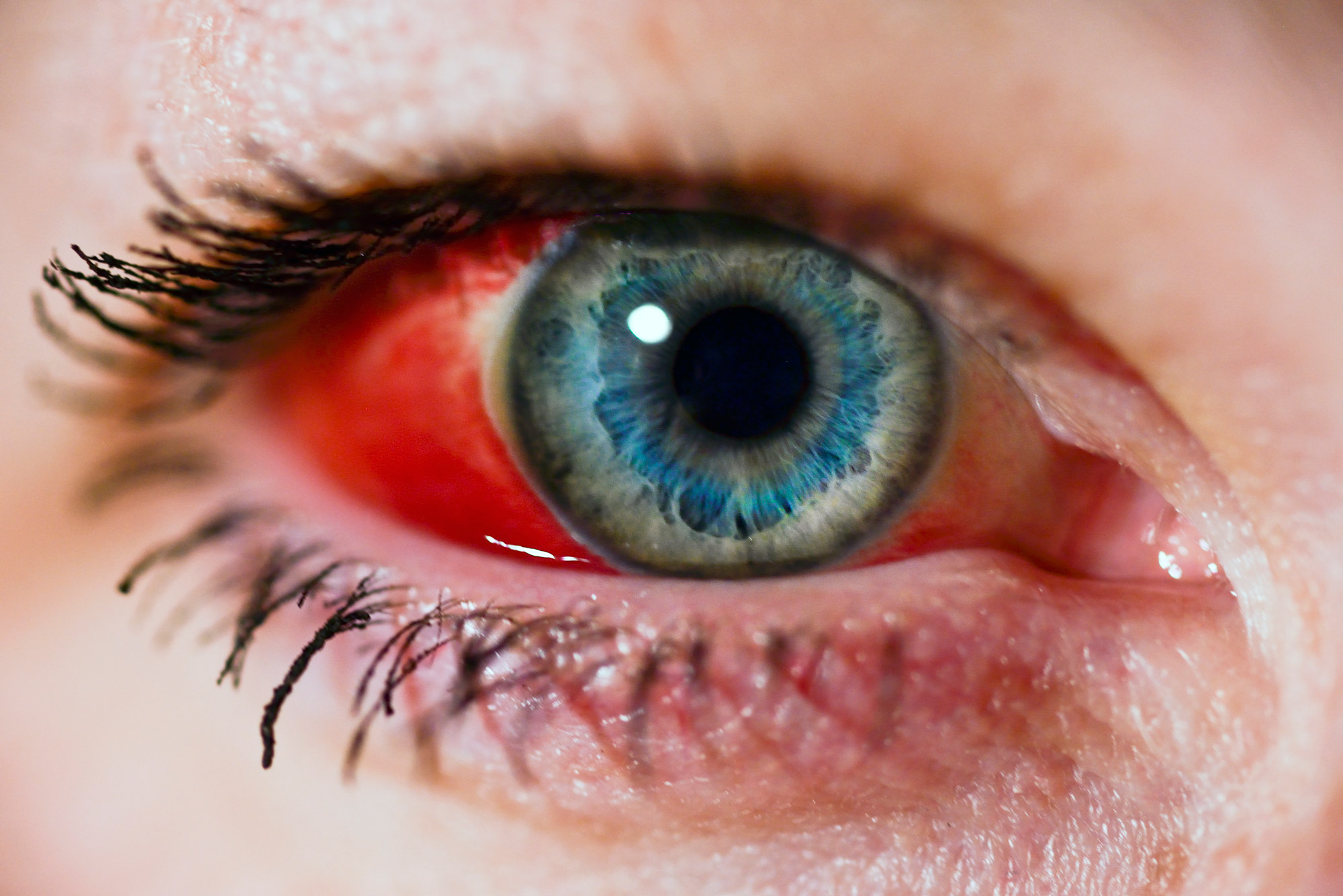The conjunctiva, or membrane that covers the white of your eye, contains many tiny blood vessels that can break, resulting in what’s called a subconjunctival hemorrhage on your eye’s surface. Most cases aren’t serious and will go away on their own.
Advertisement
Cleveland Clinic is a non-profit academic medical center. Advertising on our site helps support our mission. We do not endorse non-Cleveland Clinic products or services. Policy

You’ve got a blood spot on your eye. Don’t panic yet. It may just be a subconjunctival hemorrhage. That’s a complicated name for a rather minor condition. Subconjunctival hemorrhage is the term for a broken blood vessel that bleeds on the surface of your eye.
Advertisement
Cleveland Clinic is a non-profit academic medical center. Advertising on our site helps support our mission. We do not endorse non-Cleveland Clinic products or services. Policy
The clear membrane that lines the inside of your eyelid and covers the white of your eye is called the conjunctiva. It contains many tiny blood vessels (capillaries) that can break easily. When a break happens, blood can leak under the conjunctiva. The blood causes the white of your eye (sclera) to turn bright red.
If you have a subconjunctival hemorrhage, the blood is trapped in the conjunctiva, so it doesn’t move and can’t be wiped away. But since the blood isn’t on your cornea or the inside of your eye, your vision isn’t affected.
The red spots caused by subconjunctival hemorrhage can look scary. But most cases don’t cause any other symptoms or need treatment. They typically go away on their own within a few weeks.
Other than the red spot in your eye, there are no subconjunctival hemorrhage symptoms. It doesn’t cause pain or swelling, and it doesn’t affect your vision. Most people who have a subconjunctival hemorrhage don’t even know it until they look in a mirror or someone tells them. There’s a chance you could have mild irritation, but there should be no discharge or any other symptoms.
Some activities and health conditions can briefly raise the blood pressure in your veins. This quick rise in pressure can cause the blood vessels on your eyes to break. These conditions may include:
Advertisement
Less common subconjunctival hemorrhage causes include:
Subconjunctival hemorrhages sometimes happen without a direct cause (a healthcare provider might say they happened idiopathically).
Risk factors for subconjunctival hemorrhage include:
In most cases, subconjunctival hemorrhages are harmless and don’t cause any complications. Rarely, they may be a sign of a serious underlying disorder, such as:
A healthcare provider or eye care specialist can diagnose a subconjunctival hemorrhage by looking at your eye. Your provider may check your blood pressure, especially if you have other areas of bleeding or bruising.
Subconjunctival hemorrhage treatment usually isn’t necessary. Artificial tears (eye drops) can help relieve eye irritation if it occurs. Most broken blood vessels heal within two weeks. Larger spots may take longer to go away. As the blood clears up, the color of the area may change, like a fading bruise.
Contact your eye care specialist if you have eye pain. This could be a sign of other conditions that are more serious, such as a hyphema — blood collecting in front of your iris (the colored part of your eye).
If broken blood vessels appear in your eyes often, your provider or eye care specialist may want you to get tests to try to identify an underlying cause. Sometimes, disorders related to blood clotting like hemophilia or von Willebrand disease make subconjunctival hemorrhage more likely.
Advertisement
Most subconjunctival hemorrhages go away on their own within two weeks. The white of your eye may have a yellowish tint as the issue resolves, but you should have no vision problems.
Subconjunctival hemorrhages can return randomly (spontaneously). About 10% of people with no known risk factors have a recurrence (the hemorrhage returned). That rate is higher for people with known risk factors, such as taking blood thinners.
If you have risk factors for subconjunctival hemorrhages, you can take steps to prevent broken blood vessels, including:
Most cases of subconjunctival hemorrhage will go away on their own with no need for treatment. However, if you have pain or other symptoms, call your healthcare provider or eye care specialist.
Subconjunctival hemorrhages may look alarming, but they’re usually no cause for concern. If you have other facial or eye injuries, you should visit a healthcare provider. If you have repeated cases of subconjunctival hemorrhage, see your provider. You may have a more serious underlying condition.
Advertisement
You may look like a character in a horror movie, but there’s no need to scream. A subconjunctival hemorrhage is a common eye condition that isn’t dangerous and should go away on its own. If you have pain along with the red spot, or if you have repeated cases of subconjunctival hemorrhage, see your healthcare provider. You may have a more serious underlying condition.
Advertisement
Cleveland Clinic’s ophthalmologists and optometrists have the highest training available. We provide exams, vision correction and care for many eye conditions.

Last reviewed on 06/28/2023.
Learn more about the Health Library and our editorial process.